Sept. 30, 2023
Prelims Pointers
Sept. 30, 2023

About Protection of Children from Sexual Offences (Pocso) Act:
- It is the first comprehensive law in India dealing specifically with the sexual abuse of children, enacted in 2012.
- It is administered by the Ministry of Women and Child Development (MoWCD).
- Objective: The Act was designed to protect children aged less than 18 from sexual assault, sexual harassment, and pornography offences and provide for the establishment of Special Courts for the trial of such offences and related matters and incidents.
- Salient Features:
- Gender-neutral law: The POCSO Act establishes a gender-neutral tone for the legal framework available to child sexual abuse victims by defining a child as “any person” under the age of 18.
- It defines various types of sexual abuse, such as penetrative and non-penetrative assault, as well as sexual harassment and pornography.
- It considers a sexual assault to be aggravated in certain circumstances, such as when the abused child is mentally ill or when the abuse is committed by someone in a position of trustor authority over the child, such as a family member, etc.
- People who traffic children for sexual purposes are also punishable under the provisions relating to abetment in the Act.
- The attempt to commit an offence under the Act has been made liable for punishment for upto half the punishment prescribed for the commission of the offence.
- No time limit for reporting abuse: A victim can report an offence at any time, even a number of years after the abuse has been committed.
- Mandatory reporting: The Act also makes it the legal duty of a person aware of the offence to report sexual abuse. In case s/he fails to do so, the person can be punished with six months imprisonment or a fine.
- Safeguards to victims: The Act incorporates child-friendly procedures for reporting, recording of evidence, investigation and trial of offences. These include:
- Recording the statement of the child at the residence of the child or at the place of his choice, preferably by a woman police officer not below the rank of sub-inspector.
- No child is to be detained in the police station at night for any reason.
- Police officers to not be in uniform while recording the statement of the child.
- The statement of the child is to be recorded as spoken by the child.
- Medical examination of the child is to be conducted in the presence of the parent of the child or any other person in whom the child has trust or confidence.
- No aggressive questioning or character assassination of the child in-camera trial of cases.
- The Act specifically laid down that the child victim should not see the accused at the time of testifying and that the trial be held in camera.
- It also required that the Special Court complete the trial, as far as possible, within a period of one year from the date of cognisance.
Amendment to the Act:
- The Act was amended for the first time in 2019 to enhance the punishments for specific offences in order to deter abusers and ensure a dignified childhood.
- This amendment enhanced the punishment to include the death penalty for aggravated penetrative sexual assault of the child.
- It also provides for levy of fines and imprisonment of up to 20 years to curb child pornography.
Prelims Pointers
Sept. 30, 2023
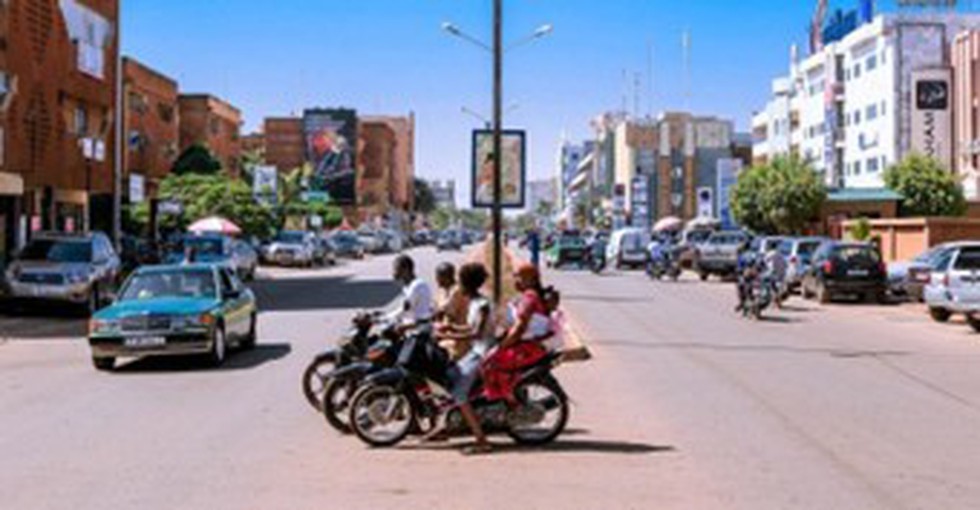
About Burkina Faso:
- It is a landlocked country in western Africa.
- Borders: It is bounded by Nigerto the east, Mali to the north and west, and Benin, Togo, Ghana, and Ivory Coast to the south.
- Capital: Ouagadougou
- Burkina Faso, previously known as Upper Volta, was once part of French West Africa since 1896. It gained independence from France in 1960.
- Geography:
- It is predominantly characterized by savannahs, plateaus, and low mountains in the southwest.
- The northern region, known as the Sahel, is arid and desert-like.
- Languages:
- The official language of Burkina Faso is French, which is used in government and education.
- There are many indigenous languages spoken throughout the country, with Moore (Mossi) being one of the most widely spoken.
- The economy is largely based on agriculture, which employs over 80% of the workforce.
- Government: It is a republic with a presidential system of government. It has experienced political transitions and changes in leadership over the years.
Prelims Pointers
Sept. 30, 2023
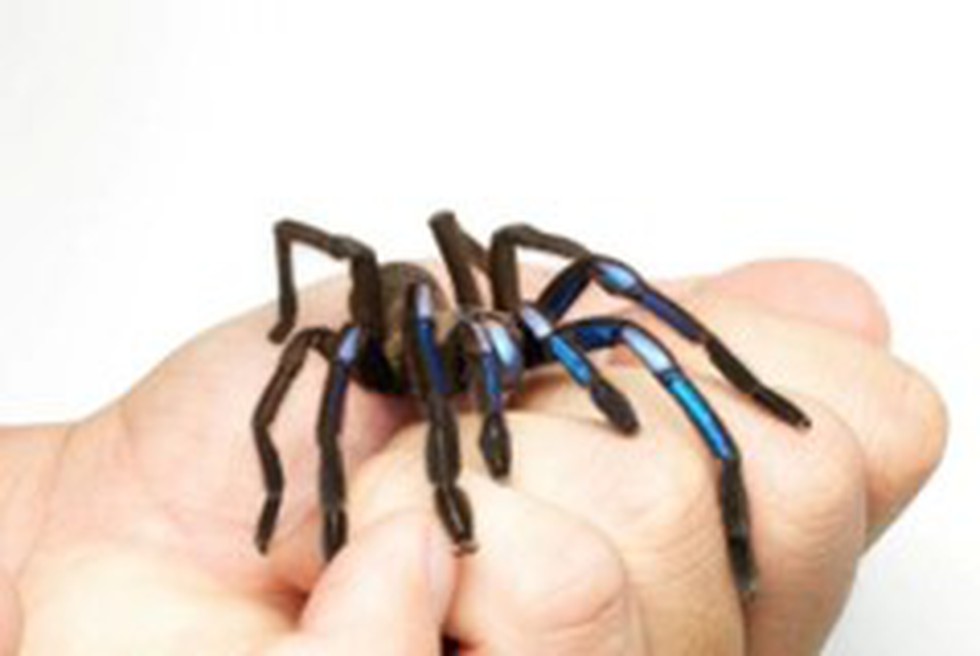
About Chilobrachys natanicharum:
- It is a new species of tarantula found in the forests of Thailand.
- It has a "blue-violet hue resembling the color of electrical sparks.
- It derives its colours not from the presence of any blue pigmentation but rather from "the unique structure of their hair, which incorporates nanostructures that manipulate light to create this striking blue appearance.
- These hairs are present on various parts of the spider's body, including its legs, chelicera (pincer-like mouth appendages), and carapace (upper shell).
- It is both terrestrial and arboreal - lives within tree hollows.
What is a tarantula?
- Tarantulas are a type of large, hairy spider belonging to the family Theraphosidae.
- There are over 900 species of tarantulas found all over the world, except for Antarctica.
- They move slowly on their eight hairy legs, but they are accomplished nocturnal predators.
- Adult tarantulas average five inches (13 centimeters) long. When spread out, their leg span is up to 11 inches (28 centimeters).
Prelims Pointers
Sept. 30, 2023
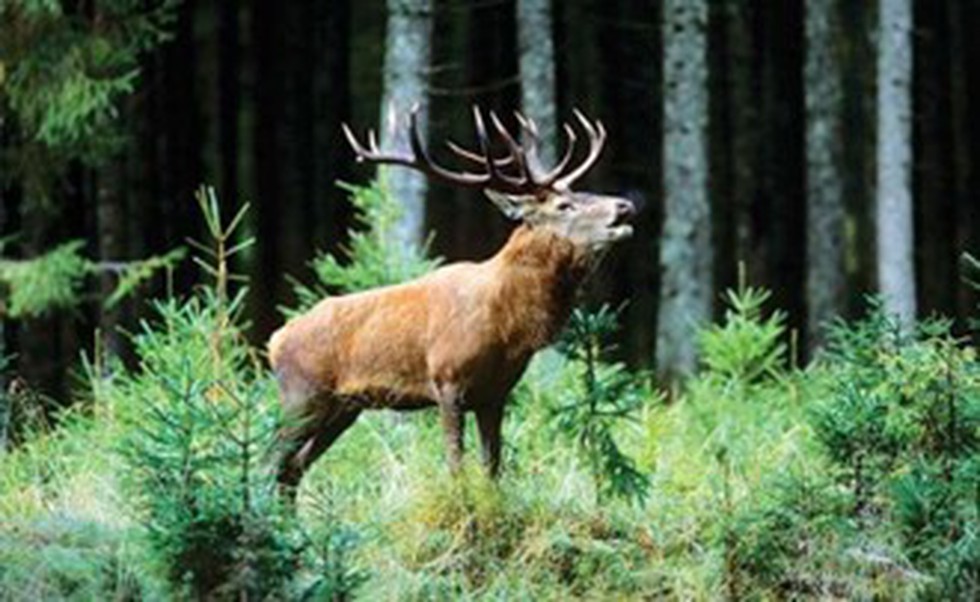
About Dachigam National Park:
- Location: It is located 22 km (kilometers) from Srinagar in Jammu and Kashmir.
- It covers an area of 141 sq km (square kilometers).
- The name literally stands for ‘ten villages’, which could be in memory of the ten villages that were relocated in order to create the park.
- It was initially established to ensure the supply of clean drinking water to Srinagar city.
- A protected area since 1910, it was declared a national park in 1981.
- The park is situated at altitudes ranging from 5500 ft to 14,000 ft.
- The park is best known as the home of the Hangul, or Kashmir stag. It holds the last viable population of the vulnerable hangul in the world.
- Terrain: Ranges from gently sloping grasslands to cliffs and sharp rocky outcrops.
- Flora: Includes wild cherry, apple, pear, peach, plum, apricot, chestnut, willow, walnut, oak, pine, birch, poplar, chinar, and elm.
- Fauna:
- Besides Hangul, Dachigam is also famous for its populations of musk deer, leopard, Himalayan Grey Langur, leopard cat, Himalayan Black Bear, yellow-throated marten, among others.
- It is the residence of raptors such as the Eurasian eagle owl, Lammergeier, Eurasian griffon and white-rumped vulture.
Key Facts about Kashmir Stag:
- It is also called Hangul, which is a subspecies of Central Asian red deer endemic to Kashmir and surrounding areas.
- It is found in dense riverine forests in the high valleys and mountains of Jammu and Kashmir and northern Himachal Pradesh.
- In Kashmir, it is found primarily in the Dachigam National Park where it receives protection.
- A small population has also been witnessed in Overa-Aru Wildlife Sanctuary in south Kashmir.
- Conservation status
- IUCN: Critically Endangered
- CITES : Appendix I
Prelims Pointers
Sept. 30, 2023

About Prachand attack helicopters:
- It is an indigenously developed Light Combat Helicopter (LCH).
- It is developed by state-run aerospace major Hindustan Aeronautics Ltd.
- The multi-role attack helicopter has been customized as per the requirements of the Indian armed forces to operate both in desert terrains and high-altitude sectors.
- It is the only attack helicopter in the world that can land and take off at an altitude of 5,000 metres (16,400 ft).
- Features:
- It is fitted with a 5.8-tonne twin-engine named Shakti engine, primarily designed for deployment in high-altitude areas.
- Its maximum speed is 268 kilometres per hour.
- It has a range of 550 kilometres and endurance of over three hours.
- It has the best stealth features, armored-shield systems, and dark-mode attack capability.
- Its crash-resistant landing gear gives it an added edge for better survivability, among other technologies like radar and IR signature.
- A pressurized cabin offers protection from nuclear, biological, and chemical contingencies.
- It is equipped with a countermeasure dispensing system that protects it from enemy radars or infrared seekers of enemy missiles.
- The weapon complement includes a 20mm nose gun in the front, capable of firing 800 rounds per minute from a range of up to 2 km.
Prelims Pointers
Sept. 30, 2023

About Internet cookies:
- Cookies contain tiny amounts of data about users in text files that act like a website’s memory.
- As soon as we use a server, tiny amounts of data start getting stored inside a cookie.
- The website uses it to identify users and their devices, which also stores these cookies.
- Whenever a user visits the same website, the cookies identify him/her and make it show relevant information.
- Types of cookies
- Session cookies: These are temporary cookies like post-it notes for websites.
- They are stored in your computer’s memory only during your browsing session. Once you close your browser, they vanish.
- These can help websites remember your actions as you navigate, like items in your shopping cart.
- Persistent cookies: These are the digital equivalent of bookmarks.
- They stay on your device after your browsing session ends.
- Persistent cookies remember your login information, language preferences, and even the ads you have interacted with. They are handy for a more personalised web experience.
- Secure cookies: These are only sent over encrypted connections, making them safer from prying eyes. Secure cookies are often used for sensitive data like login credentials.
- Uses of cookies
- They act as digital ID cards, aiding in user authentication by allowing websites to recognise and keep you logged in during your visit.
- They foster a sense of personalisation, recalling your preferences such as language choice or website theme.
- They function as the digital equivalent of a persistent shopping cart, ensuring that items you have added online remain there when you return.
Prelims Pointers
Sept. 30, 2023
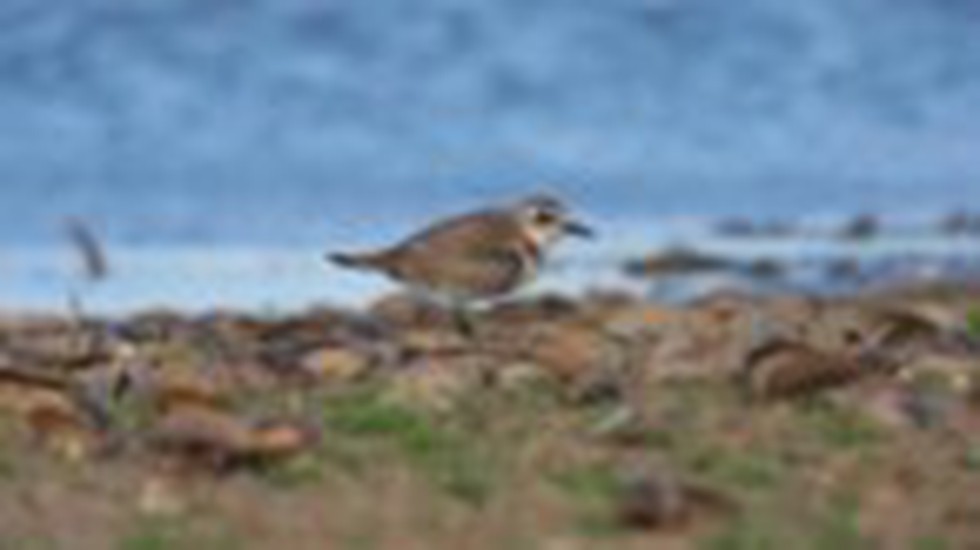
About Greater sand-plover:
- It is known for long distance migration.
- Appearance:
- It is a medium-sized plover with a long hefty bill.
- Breeding adults have a dark mask and orangish chest, neck, and forehead; females duller than males.
- Non-breeding birds and immatures are sandy brown above and white below, with a white throat and “eyebrows.”
- Additionally, unlike some Lesser Sand-Plovers, Greater never has a black boundary around the throat.
- It breeds in high-elevation areas, where it favors arid, open habitats, sometimes near water. Winters on coastal mudflats and estuaries.
- It breeds during April to May in central Asia, late March to late May in Turkey and upto late June in Armenia.
- It winters in the shores of Indian and Australian Oceans after the breeding.
- Diet: The bird’s diet consists of beetles, worms, crustaceans, molluscs, other insects and their larvae.
- Habitat:Mudflats and sandy shores.
- Behaviour/Ecology: Associates with other feeding shorebirds, especially Lesser Sand Plover.
- Conservation status
- IUCN: Least Concern
Prelims Pointers
Sept. 30, 2023
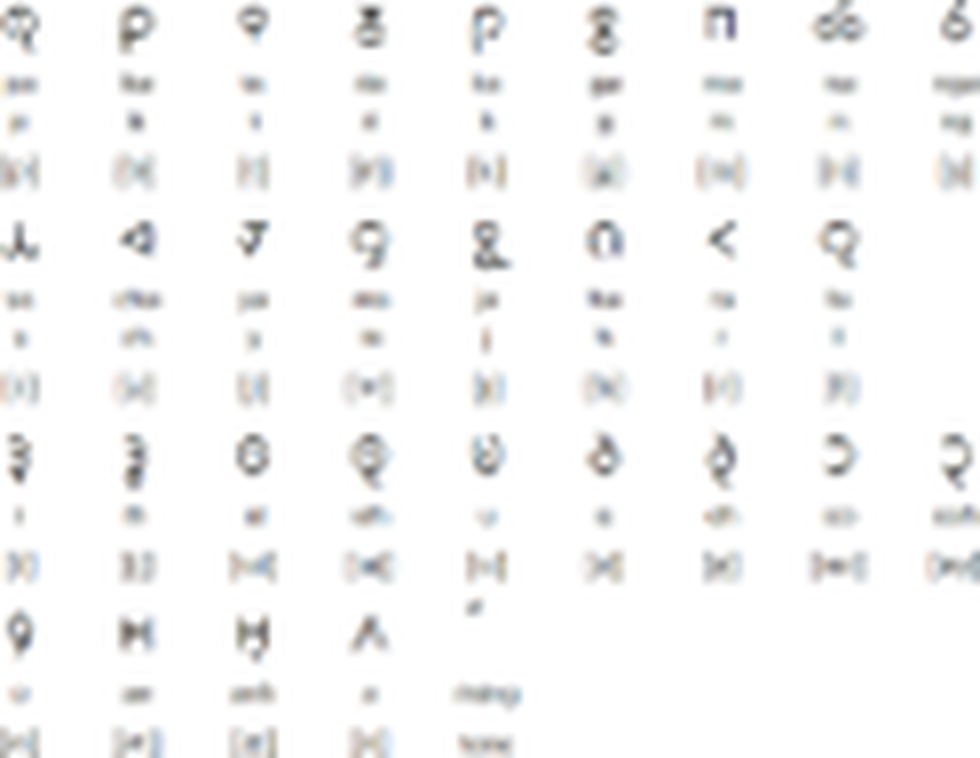
About Toto language:
- It is a Sino-Tibetan language spoken by the tribal Toto people and is written in the Bengali script
- A prominent community member Dhaniram Toto developed a script as recently as in 2015.
- It is spoken by barely 1,600 people living in parts of West Bengal bordering Bhutan.
Key facts about Toto Shabda Sangraha
- The dictionary has been compiled by Bhakta Toto, a bank employee-cum-poet, and published jointly by the trust and Bhasha Samsad
- The dictionary is a step in the direction of preserving the language, alive so far only orally, by putting its vocabulary in print.
- Toto words, to be translated into Bengali and English, will be composed in the Bengali script, considering that the Toto script is still in a nascent stage and members of the tribe are more familiar with the Bengali script.
Prelims Pointers
Sept. 30, 2023
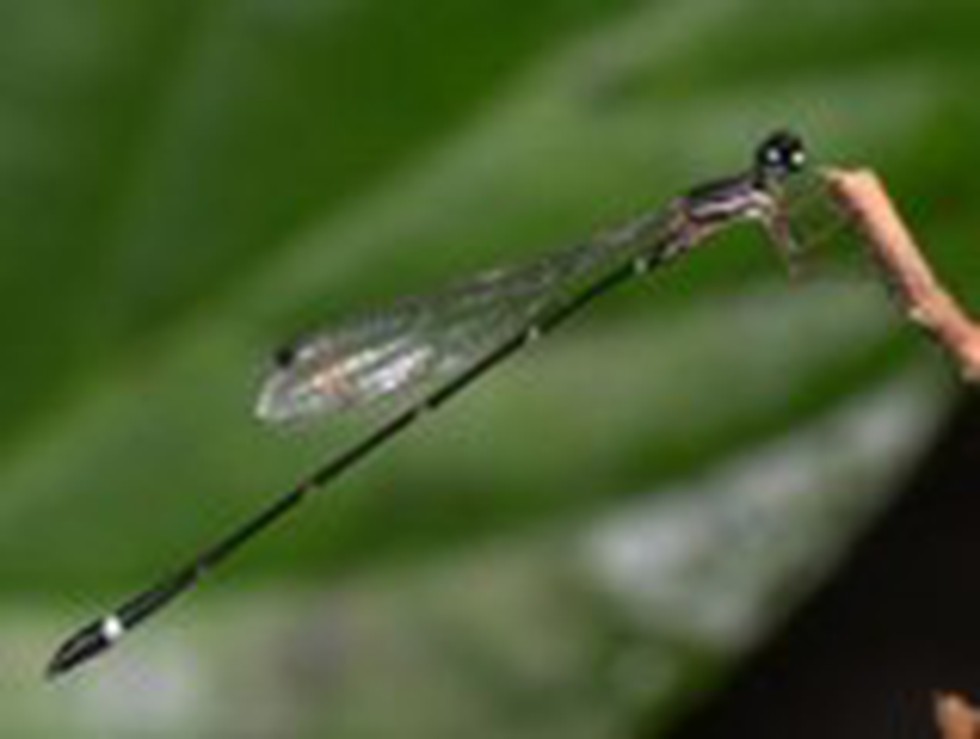
About Armageddon Reedtail:
- The species was discovered northeast of Thiruvananthapuram.
- Features: It has a captivating dark brown to black body with vibrant greenish-blue eyes, and half of its eight abdominal segments are marked with delicate pale blue markings.
- Its only habitat is primary montane streams, where it thrives beneath dense canopy cover.
- The name, Armageddon Reedtail, is a direct reference to the concept of “Ecological Armageddon”, a term used to describe the devastating decline of insect populations around the world.
- Threat: This species faces the threat of extinction due to habitat loss and changing environmental conditions.
Key facts about damselfly
- These are insects in the sub-order Zygoptera (meaning “paired-wings”).
- These are found mainly near shallow, freshwater habitats and are graceful fliers with slender bodies and long, filmy, net-veined wings.
- These are generally smaller, more delicate, and fly weakly in comparison with dragonflies.
- Female damselflies normally use a bladelike ovipositor to place eggs inside plant tissue.
- In many species of Damselflies adults change colour as they mature.
Prelims Pointers
Sept. 30, 2023
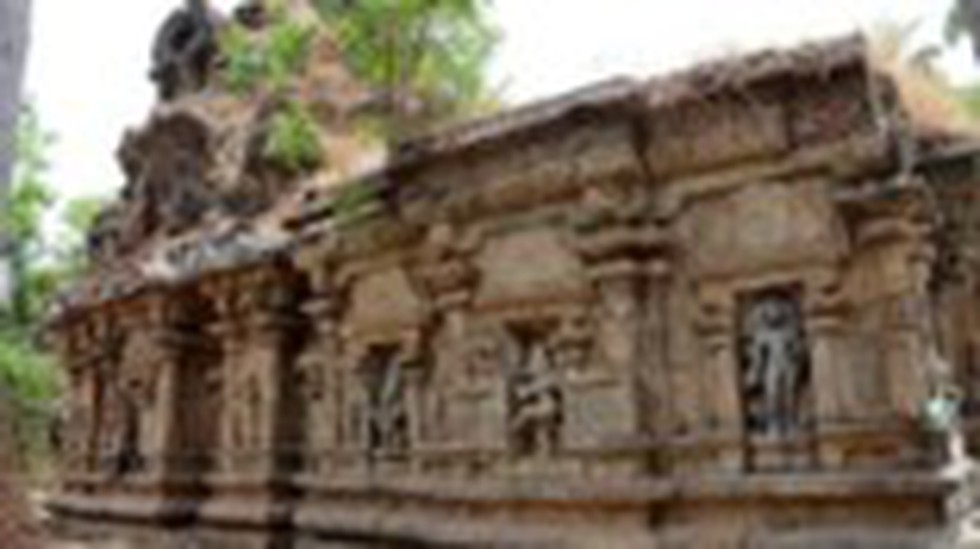
About Naganathaswamy Temple:
- It was built by Rajendra Chola I (1012-1044 CE).
- It is referred as Kailasamudaiyar temple in inscriptions.
- Features
- It is known for its exquisite stone sculptures and important inscriptions.
- It consists of an ekatala vimana and a mukha mandapa.
- The walls of both structures are divided into three bays.
- The central bays of the vimana have niches to accommodate Dakshinamurthi in the south, Lingodhbava in the west and Brahma in the north.
- The mukha mandapa is provided with three niches on the south and the north.
- Excellent sculptures of Bikshatana, Adavallan and Ganapathi decorate the south, whereas Gangadarara, Durga and Ammaiappar are in the north.
- All the niches have well carved and distinctive makara thoranas (ceremonial arches) with relief sculptures in the centre.
- Inscriptions: The temple is known for its important inscriptions belonging to the periods of Rajendra Chola I and Kulothunga I (regnal years 1070-1120 CE).
- Nine interesting and informative inscriptions have been recorded from this temple.
- The earliest among them belongs to the fourth regnal year of Rajendra Chola I.
- It refers to a grant of land free of taxes by the nagaratthar of Ilaichikkudi for raising a flower garden named after the king for the use of the temple.
Sept. 29, 2023
Prelims Pointers
Sept. 29, 2023

About Noor-3 Satellite:
- It is an imaging satellite developed by Iran.
- It is a satellite with potential spying capabilities, boosting Iran’s abilities in space.
- It has been put in an orbit 450 kilometers (280 miles) above the Earth's surface.
- It was launched by the three-stage Qased, or messenger carrier.
- The spacecraft's two predecessors, Noor-1 and Noor-2, launched in April 2020 and March 2022, respectively, also atop Qased rockets.
- Noor-1 fell back to Earth in April 2022, but Noor-2 remains operational and may work in concert with Noor 3 when the latter satellite comes online.
- Who carried out the launch?
- The launch was carried out by the aerospace arm of Iran's paramilitary Revolutionary Guard.
- The Guard operates its own space program parallel to Iran's regular armed forces and answers only to Supreme Leader Ayatollah Ali Khamenei.
- It launched its first satellite into space in April 2020 (Noor-1).
Prelims Pointers
Sept. 29, 2023
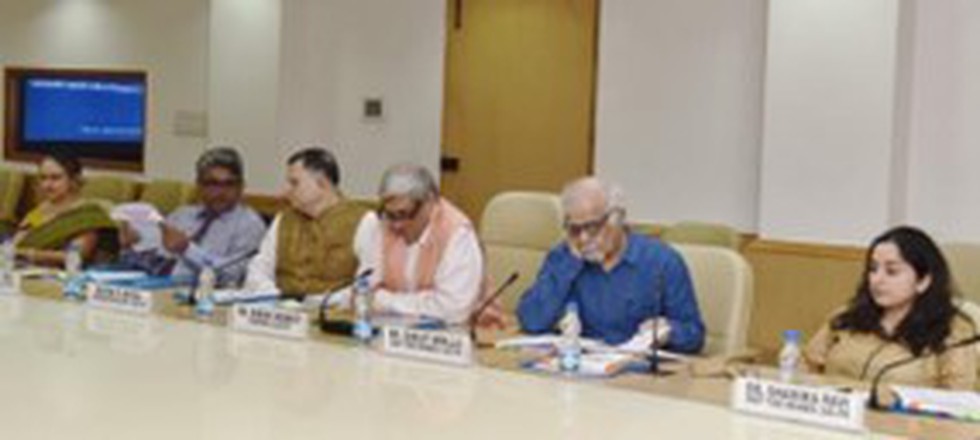
About Economic Advisory Council to the Prime Minister (EAC-PM):
- It is an independent body constituted to give advice on economic and related issues to the Government of India, specifically to the Prime Minister.
- It was set up for the first time in September 2017 with a term of two years.
- Terms of Reference:
- Analyzing any issue, economic or otherwise, referred to it by the Prime Minister and advising him thereon, addressing issues of macroeconomic importance, and presenting views thereon to the Prime Minister.
- These could be either suo-motu or on reference from the Prime Minister or anyone else.
- Attending to any other task as may be desired by the Prime Minister from time to time.
- Composition:
- EAC-PM is headed by a Chairperson and consists of eminent economists as members.
- It is supported in its functions by a team of officials and administrators.
- There is no fixed definition of the exact number of members and staff of the EAC-PM.
- It is common for the Council to be reconstituted time and again with different organizational structures headed by various economists who are of recognized international eminence.
- For administrative, logistic, planning, and budgeting purposes, the NITI Aayog serves as the nodal agency for the EAC-PM.
What is a Patent?
- A patent is an exclusive right granted for an invention, which is a product or a process that provides, in general, a new way of doing something, or offers a new technical solution to a problem.
- To get a patent, technical information about the invention must be disclosed to the public in a patent application.
- In principle, the patent owner has the exclusive right to prevent or stop others from commercially exploiting the patented invention. In other words, patent protection means that the invention cannot be commercially made, used, distributed, imported, or sold by others without the patent owner's consent.
- Patents are territorial rights. In general, the exclusive rights are only applicable in the country or region in which a patent has been filed and granted, in accordance with the law of that country or region.
- The protection is granted for a limited period, generally 20 years from the filing date of the application.
Prelims Pointers
Sept. 29, 2023
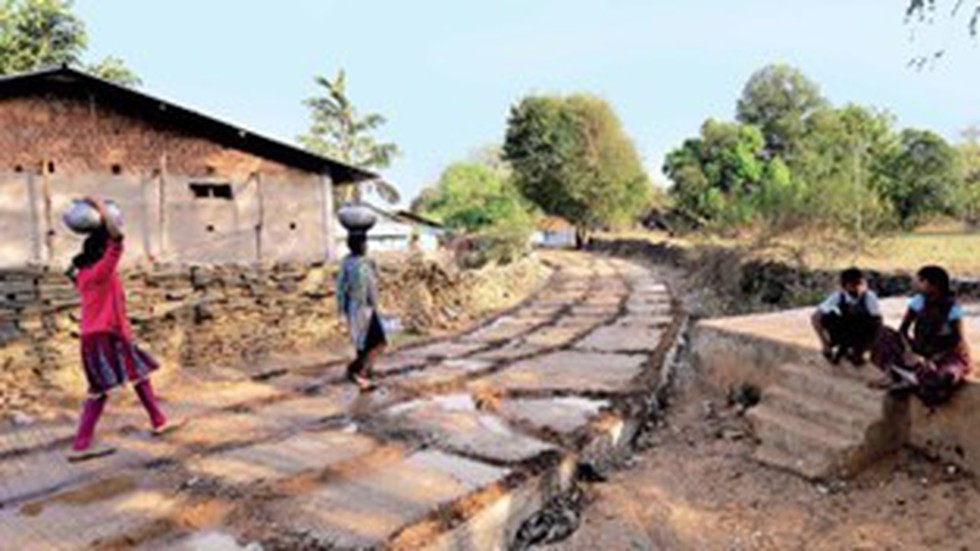
About ‘Sankalp Saptah’:
- It is linked to the effective implementation of the Aspirational Blocks Programme (ABP).
- To implement the ABP and prepare an effective block development strategy, “chintan shivirs (brainstorming sessions)” were organized at village and block levels across the country. The Sankalp Saptah is the culmination of these chintan shivirs.
- Sankalp Saptah will be observed in all 500 aspirational blocks.
- Each day in Sankalp Saptah will be dedicated to a specific development theme on which all aspirational blocks will work.
- The themes for the first six days are “Sampoorna Swasthya”, “Suposhit Parivar”, “Swachhta”, “Krishi”, “Shiksha”, and “Samridhi Diwas”.
- The last day of the week will be a celebration of the work conducted during the entire week, as “Sankalp Saptah – Samavesh Samaroh”.
- The inaugural programme will witness the participation of about 3,000 panchayat and block-level people’s representatives and functionaries from across the country at the Bharat Mandapam.
Key Facts about Aspirational Blocks Programme (ABP):
- ABP was launched on January 7, 2023, on the lines of the Aspirational District Programme that was launched in 2018 and covers 112 districts across the country.
- Aim: Enhancing governance and improving the quality of life in 500 Aspirational Blocks spanning 329 districts across India.
- Over half of these blocks are in 6 states: Uttar Pradesh (68 blocks), Bihar (61), Madhya Pradesh (42), Jharkhand (34), Odisha (29) and West Bengal (29).
- It will be attained by converging existing schemes, defining outcomes, and monitoring them on a constant basis, enabling holistic development in areas that require added assistance.
Prelims Pointers
Sept. 29, 2023

About CALIPSO Mission:
- CALIPSO (Cloud-Aerosol LIDAR and Infrared Pathfinder Satellite Observations) is a mission dedicated to studying how clouds and aerosols impact the Earth’s climate.
- It is a joint project between NASA (National Aeronautics and Space Administration) and CNES (Centre National d'Études Spatiales), the French space agency.
- Launched in 2006, CALIPSO is a satellite-based observatory.
- Scientists are using data from CALIPSO to construct 3D models of the atmosphere that improve our ability to predict future climate change.
- CALIPSO has been part of a constellation of spacecraft called the "A-Train," including Aqua, Aura, and PARASOL spacecraft, dedicated to studying the Earth’s weather and environment.
- Instrumentation:
- It carries CALIOP, a two-wavelength, polarization-sensitive lidar, along with two passive sensors operating in the visible and thermal infrared spectral regions.
- The lidar emitted pulses of laser light and measured the amount of light that was scattered back by clouds and aerosols. This information was used to create vertical profiles of cloud and aerosol properties, such as their height, thickness, and optical depth.
- CALIOP is the first lidar to provide long-term atmospheric measurements from Earth's orbit.
- This information helps scientists create three-dimensional profiles of cloud and aerosol distributions.
- The mission recorded more than 10 billion LIDAR measurements and helped create thousands of scientific reports over its 17 years of operation.
Prelims Pointers
Sept. 29, 2023

About Antimatter:
- Antimatter is the same as ordinary matter except that it has the opposite electric charge.
- It is also known as “mirror” matter.
- For instance, an electron, which has a negative charge, has an antimatter partner known as a positron. A positron is a particle with the same mass as an electron but a positive charge.
- The antimatter particles corresponding to electrons, protons, and neutrons are called positrons, antiprotons, and antineutrons; collectively they are referred to as antiparticles.
- These anti-particles can combine to form anti-atoms and, in principle, could even form anti-matter regions of our universe.
- Matter and antimatter cannot coexist at close range for more than a small fraction of a second because they collide with and annihilate each other, releasing large quantities of energy in the form of gamma rays or elementary particles.
- Antimatter was created along with matter after the Big Bang.
- Humans have created antimatter particles using ultra-high-speed collisions at huge particle accelerators such as the Large Hadron Collider, which is located outside Geneva and operated by CERN (the European Organization for Nuclear Research).
- There are also naturally produced antiparticles made sporadically throughout the universe.
What is General Theory of Relativity?
- General relativity is physicist Albert Einstein's understanding of how gravity affects the fabric of space-time.
- Theory:
- According to the theory, time and space are fused together in a quantity known as spacetime.
- Gravity is treated as a geometric phenomenon that arises from the curvature of space-time.
- Massive objects cause spacetime to curve, and gravity is simply the curvature of spacetime.
- Gravitational lensing is a dramatic and observable example of Einstein’s theory in action.
- Gravitational lensing:
- Extremely massive celestial bodies such as galaxy clusters cause spacetime to be significantly curved. In other words, they act as gravitational lenses.
- When light from a more distant light source passes by a gravitational lens, the path of the light is curved, and a distorted image of the distant object — maybe a ring or halo of light around the gravitational lens — can be observed.
Prelims Pointers
Sept. 29, 2023
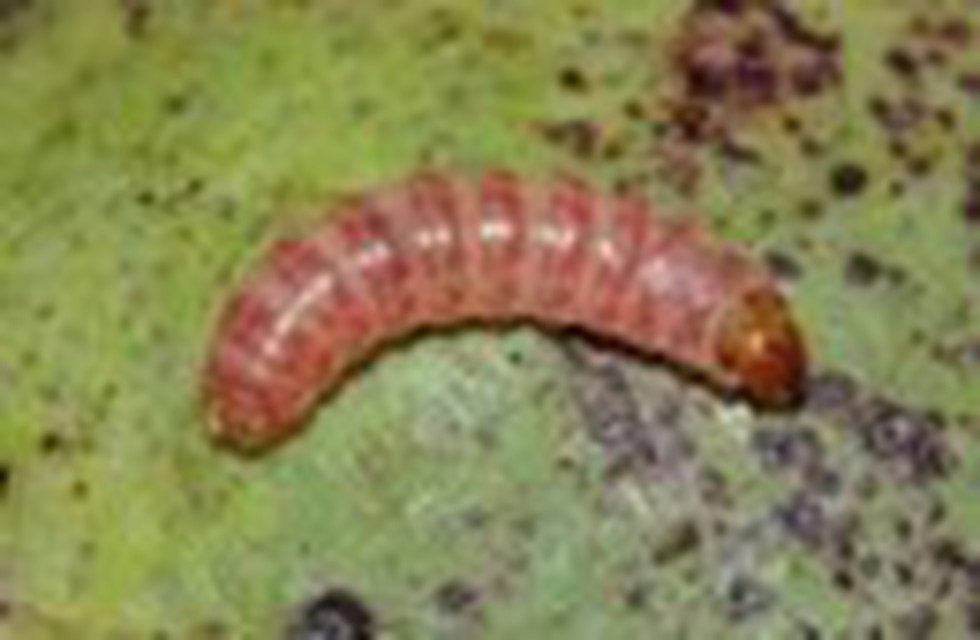
About Pink ballworm (PBW):
- It is one of the most destructive pests of cotton.
- Distribution: Originally native to India, it is now recorded in nearly all the cotton-growing countries of the world.
- Description:
- The adults are small moths about 3/8 inch long and are dark brown with markings on the fore wing.
- The larval stage is the destructive and identifiable stage.
- The larvae have distinctive pink bands and can reach a length of ½ inches right before they pupate.
- Ecological Threat:
- Adults lay eggs on cotton bolls; once hatched, the larvae eat the seeds and damage the fibers of the cotton, reducing the yield and quality.
- When the larvae mature, they cut out the boll and drop to the ground and cocoon near the soil surface.
- It has also been observed to attack hibiscus, okra, and hollyhock plants.
- The PBW larvae burrow into the developing fruits (bolls) of cotton plants, and the damage affects both the weight and quality of the harvested bolls containing the lint fibre and seeds inside.
Prelims Pointers
Sept. 29, 2023

About Five Eyes’ intelligence alliance:
- It is a multilateral intelligence-sharing network shared by over 20 different agencies of five English-speaking countries — Australia, Canada, New Zealand, the United Kingdom and the United States.
- It is both surveillance-based and signals intelligence (SIGINT).
- Intelligence documents shared between the members countries are classified as ‘Secret—AUS/CAN/NZ/UK/US Eyes Only,’ which gave the group its title ‘Five Eyes.’
- Background of the alliance
- The alliance between the U.S. and the U.K. evolved around the Second World War to counter the Cold War Soviet threat.
- The two countries, which had successfully deciphered German and Japanese codes during the World War, forged a collaboration to share intelligence related to signals such as radio, satellite and internet communications.
- In the aftermath of the war in 1946, the alliance was formalised through an agreement for cooperation in signals intelligence.
- The treaty called the British-U.S. Communication Intelligence Agreement, or BRUSA (now known as the UKUSA Agreement), was signed between the State-Army-Navy Communication Intelligence Board (STANCIB) of the U.S. and the London Signal Intelligence Board (SIGINT) of Britain.
- Its scope was limited to “communication intelligence matters only” related to “unrestricted” exchange of intelligence products in six areas: collection of traffic; acquisition of communication documents and equipment; traffic analysis; cryptanalysis; decryption and translation; and acquisition of information regarding communication organisations, practices, procedures, and equipment.
- The arrangement was later extended to ‘second party’ countries —Canada joined in 1948, while Australia and New Zealand became part of the alliance in 1956.
Prelims Pointers
Sept. 29, 2023
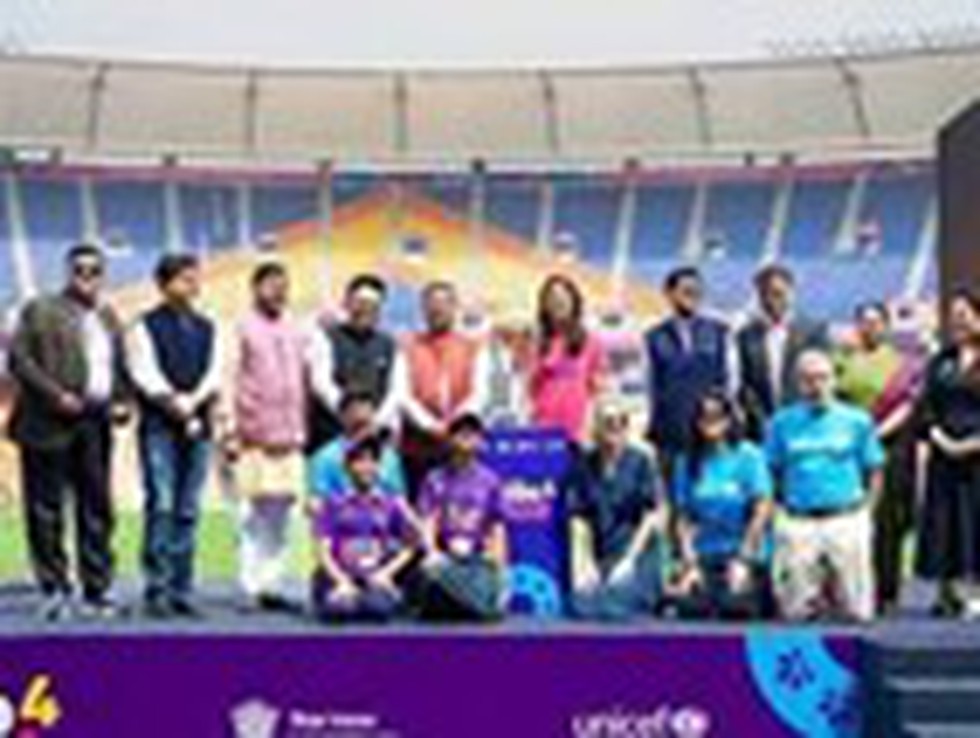
About CRIIIO 4 GOOD Initiative:
- It is a new online life skills learning module.
- It consists of series of 8 cricket-based animation films to promote gender parity, equip girls with life skills and encourage their participation in sports.
- Using the popularity and passion of cricket young audiences, ICC and UNICEF released these modules to inspire children and youth to adopt critical life skills and appreciate the importance of gender equality.
- The programme is in three languages: English, Hindi and Gujarati.
- The themes of the eight modules are: leadership, problem-solving, confidence, decision-making, negotiation, empathy, teamwork and goal setting and are visualized through state-of-the-art animation using cricketing examples.
- The programme was launched in association with the International Cricket Council, UNICEF, and the Board of Control for Cricket in India.
Key facts about UNICEF
- UNICEF stands for the United Nations Children’s Fund which was established in 1946.
- It is a specialised agency of the United Nations dedicated to providing humanitarian and developmental assistance to children and mothers in developing countries.
- The organisation operates in over 190 countries and territories around the world.
- It is working to ensure that every child has access to basic healthcare, education, nutrition, clean water, and protection from violence and exploitation.
- Headquarter: New York City, United States.
Prelims Pointers
Sept. 29, 2023
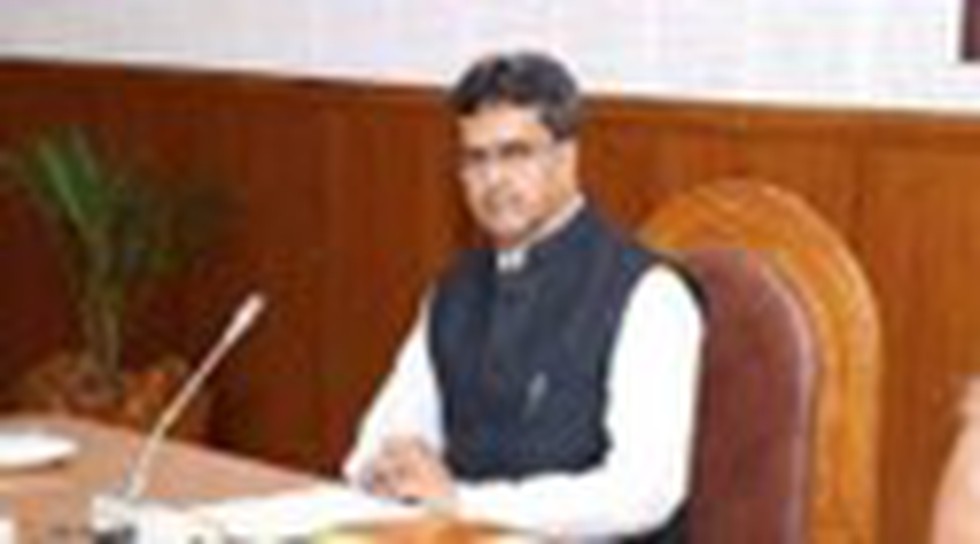
About e -Cabinet system:
- E -Cabinet is a powerful software portal for State Governments to conduct Cabinet meetings electronically and online mode.
- It is developed by National Information Centre (NIC), Ministry of Electronics & IT (MeitY).
- Tripura has become the fourth state—and second in the Northeast—after Uttarakhand, Uttar Pradesh and Arunachal Pradesh, to have introduced an e-cabinet system.
- Features
- It maximizes usage of technology in meetings and reduces paper use.
- It automates workflow activities of meetings; before, during and after.
- It is designed for smart tablets, with rich UI and UX elements, for ease of use.
- Push & Pull mechanism built in portal ensures high security needed for Cabinet matters.
- Build institutional memory & knowledge repository, enabling quick search & retrieval.
- For virtual meetings eCabinet is integrated with Bharat VC solution of NIC.
- Benefits/Impact of eCabinet
- Saves huge resources of Paper, fuel, and manpower
- Online Data Update
- Information for all leading to coordinated action
- Better decision making, Quick retrieval of Decisions taken in meetings and review Action taken
- Enables Virtual participation of Ministers
Prelims Pointers
Sept. 29, 2023

About Global Innovation Index 2023:
- It is published by the World Intellectual Property Organization.
- It is a reliable tool for governments across the world to assess the innovation-led social and economic changes in their respective countries.
- This year, the NITI Aayog, in partnership with the CII and the World Intellectual Property Organisation (WIPO), is hosting, virtually, the India Launch of the GII 2023 on 29th September 2023.
- Key findings
- The Global Innovation Index is built on a rich dataset – the collection of 80 indicators from international public and private sources – going beyond the traditional measures of innovation since the definition of innovation has broadened.
- Top 5 countries: Switzerland, Sweden ,United States United Kingdom (4th) and Singapore (5th).
- It listed India as among the 21 economies that outperformed for a 13th consecutive year on innovation relative to level of development.
- It states that India, Iran, Philippines, Turkiye, Vietnam and Indonesia are among the economies within the GII top 65 that climbed fastest in the ranking over the last decade.
- India holds top ranking within the Central and Southern Asia region for Human capital and research (48th), Business sophistication (57th) and Knowledge and technology outputs (22nd).
- Strong indicators include ICT services exports (5th), Venture capital received (6th), Graduates in science and engineering (11th) and Global corporate R&D investors (13th).
Key facts about the World Intellectual Property Organisation
- It works with the vision of encouraging creative activity and promoting the protection of Intellectual Property throughout the world.
- WIPO is one of the 15 specialised agencies of the United Nations.
- Currently, there are 193 members of the World Intellectual Property Organisation.
- Headquarter: Geneva.
Sept. 28, 2023
Prelims Pointers
Sept. 28, 2023
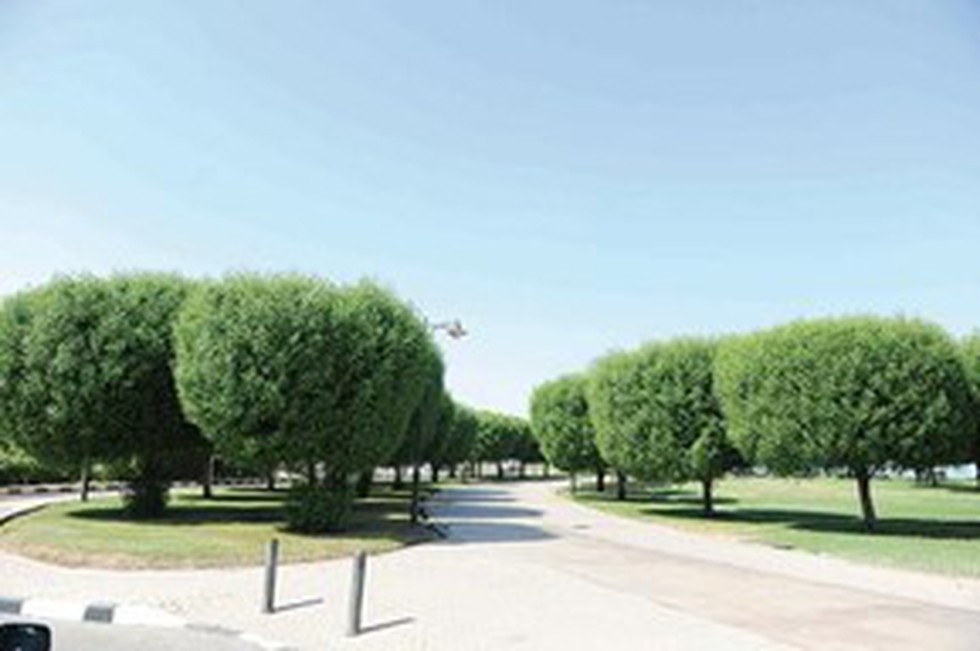
About Conocarpus tree:
- It is a flowering plant belonging to the family of Combretaceae.
- It is an invasive mangrove species.
- Trees of this species flower in winter and spread pollen in nearby areas.
- It has been used by various public authorities in India as landscaping for road medians, along roads, and in public gardens.
- Countries in the Arabian Peninsula have used the plant to block sand from desert storms and to control pollution.
- This tree is famous for its dark green leaves color throughout the year and withstands harsh environmental conditions such as high and low temperatures.
- It is very adaptive and could grow even in areas with extreme salinity.
- It absorbs more water from soil than other species and is a threat to groundwater.
- This species goes deep into the ground and grows too much to damage the communication cables, drainage lines and drinking water pipelines.
- It is native to parts of North and South America, as well as parts of Africa.
Prelims Pointers
Sept. 28, 2023
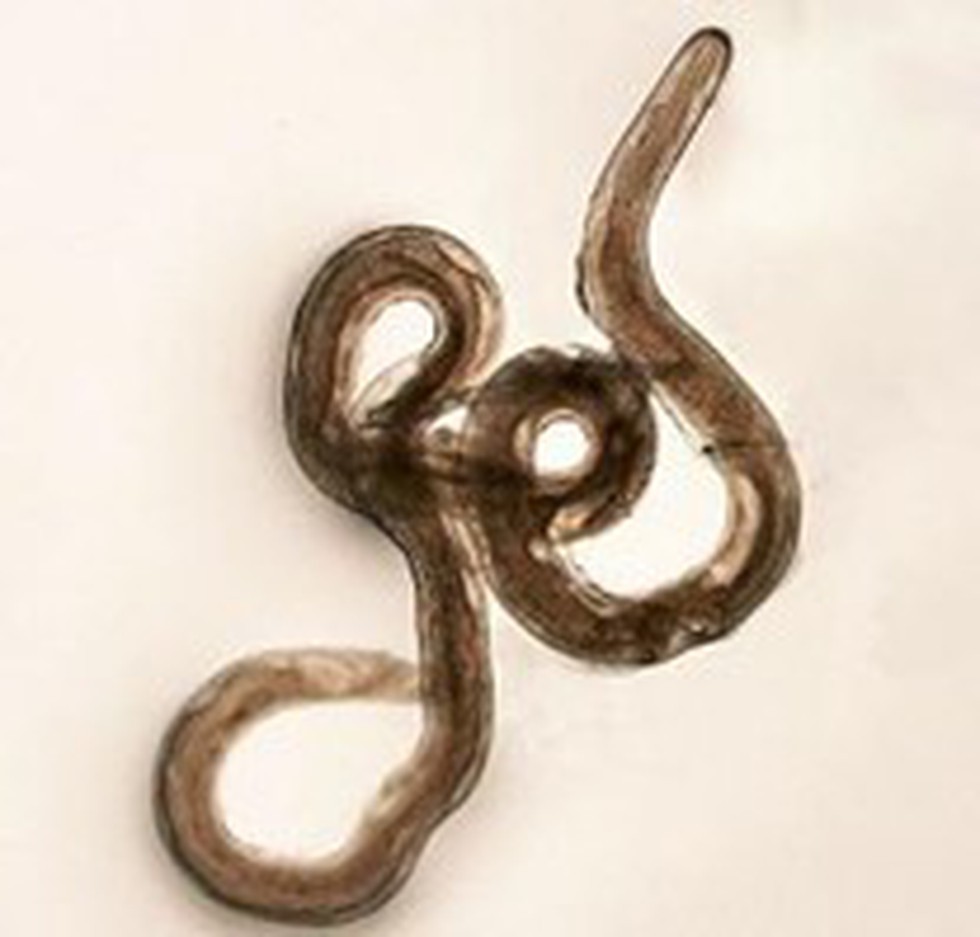
About Angiostrongylus cantonensis:
- Angiostrongylus cantonensis, commonly known as the rat lungworm, is a parasitic nematode (roundworm) that infects rodents, particularly rats.
- It is typically found in Southeast Asia and the Pacific Islands, including Hawaii.
- While rats serve as the primary hosts for this parasite, humans and other animals, including snails and slugs, can become infected as incidental hosts.
- Transmission: It is spread through rat faeces and can infect humans and other animals through produce or other food items.
- Impact on Humans:
- Once inside a human, the worm could cause a rare brain infection known as eosinophilic meningitis.
- Symptoms can include headaches, still neck, tingling, fevers, vomiting, or painful feelings in the skin.
- Most infections resolve spontaneously over time without specific treatment because the parasite cannot survive for long in the human body.
- The worm can, in severe cases, cause coma or even death in humans, and can also infect pets.
- Treatment:
- There is currently no specific treatment for the parasite.
- The most common types of treatment are for the symptoms of the infection, such as pain medication for headache or medications to reduce the body’s reaction to the parasite.
Prelims Pointers
Sept. 28, 2023
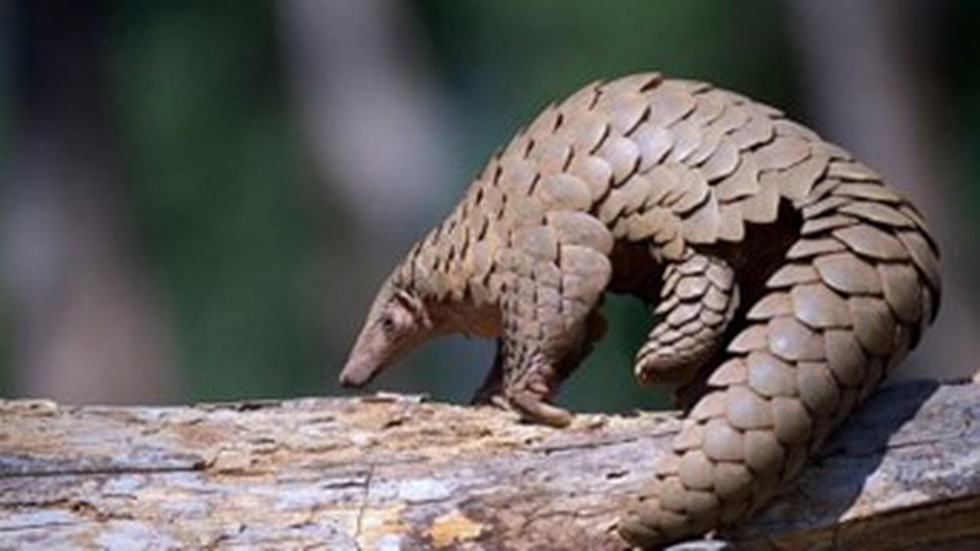
About Manis Mysteria:
- It is a newly discovered Pangolin species.
- The newly identified pangolin species emerged from a detailed study of scales seized in China’s Yunnan province in 2015 and 2019.
- This new species is believed to have diverged from its Philippine and Malayan relatives approximately five million years ago.
What are Pangolins?
- They are mammals known for their distinctive appearance and protective scales.
- They are often referred to as "scaly anteaters" due to their characteristic scales and their diet, which primarily consists of ants and termites.
- Pangolins are found in parts of Africa and Asia and are known for their elusive nature and status as the most trafficked mammals in the world.
- Features:
- They are easily recognizable by their armor-like scales, which cover their bodies. These scales are made of keratin, the same protein found in human hair and nails. They are the only known mammals with this feature.
- When threatened, pangolins can curl into a tight ball, with their scales forming a protective barrier.
- Their diet consists mainly of ants and termites, which they capture using their long tongues (A pangolin’s tongue is longer than its body).
- Pangolins have no teeth; they chew with gravel and and keratinous spines inside the stomach.
- They are most active at night and are solitary creatures.
- Threat:
- All pangolin species are listed on the International Union for Conservation of Nature (IUCN) Red List of Threatened Species.
- The Indian pangolin, also called thick-tailed pangolin, is classified as Endangered under the IUCN Red List.
Prelims Pointers
Sept. 28, 2023
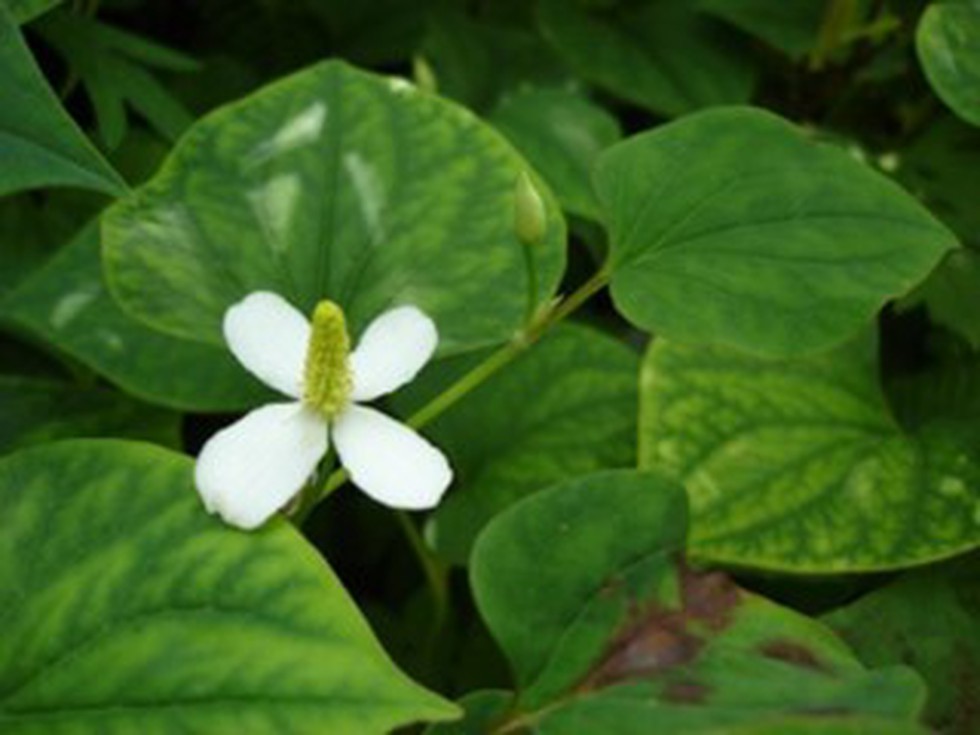
About Fish Mint:
- It is an herbal plant full of medicinal properties and grown on the ground with wide leaves.
- Scientific Name: Houttuynia cordata
- Other Names: It has many names, such as Bishop’s Weed, Chinese Lizard Tail, Fish Wort, Fish Leaf, Rainbow Plant and Chameleon Plant.
- Despite being called “fish mint”, it’s not a member of the mint family. It does, however, spread aggressively like mint.
- Distribution: Its native range extends from the Himalayan foothills through Southeast Asia, China, Korea and Japan.
- Habitat: It thrives in wet locations and can even grow partially submerged in water.
- Features:
- It is an herb with beautiful white flowers and broad, heart-shaped leaves.
- Unlike its appearance, it has a fish-like taste and smell. Hence, the name, fish mint.
- The plants grow to 2 to 3 feet in height with a spread of 3 feet.
- The stems of this plant are climbing tender vines. The color of its stem is medium to light green, and its leaves are of dark to medium green color.
- It is considered an invasive plant because of its ability to regrow from underground rhizomes, which are fragile and break off easily, forming new plants when disturbed.
- Medicinal Properties: It is used to treat digestive issues, insect bites, fevers, coughs, influenza, kidney ailments and a host of other ailments.
- The leaf is used in many Asian cuisines as a vegetable or fresh herb, and fish mint root can also be eaten.
Prelims Pointers
Sept. 28, 2023

About Social Bonds:
- Social bonds, also known as social impact bonds and abbreviated as SIB, are the type of bond where the bond issuer is gathering funds for a project that has some socially beneficial implications.
- These bonds are designed to finance projects that address various social issues, such as healthcare, education, affordable housing, poverty alleviation, and environmental sustainability.
- The Pimpri Chinchwad Municipal Corporation (PCMC) in Maharashtra's Pune and United Nations Development Programme (UNDP) in 2020 co- created India's inaugural SIB.
- Features of Social Bonds issued by NABARD:
- This is the first externally certified AAA-rated Indian Rupee-denominated SIB in the country. The bonds have been rated 'AAA' by CRISIL and ICRA.
- The base issue size of the social bonds was ₹1,000 crore, with an option to retain oversubscription up to ₹2,000 crore, thereby aggregating up to Rs 3,000 crore.
- The face value of each bond is ₹1 lakh.
- Maturity: 5 years
- Coupon Rate: 7.63 per cent.
- Sustainability Bond Framework:
- NABARD recently announced a Sustainability Bond Framework, which seeks to finance and refinance new or existing eligible green and social projects.
- Eligible social projects include affordable basic infrastructure, access to essential services, affordable housing, employment generation, food security, socioeconomic advancement, and empowerment.
- Projects that promise energy efficiency, including green buildings, energy storage, and smart grids, would also be eligible to get funding through the new breed of bonds that NABARD is rolling out.
Key Facts about NABARD:
- It is a financial institution that was set up by the Indian government to promote sustainable agriculture and rural development in the country.
- It is the main regulatory body in the country’s rural banking system.
- Formation:
- It was established in 1982as a central regulating body for agriculture financing and the rural section.
- The government of India established NABARD under the outlines of the National Bank for Agriculture and Rural Development Act 1981.
- Objective: Promoting agriculture and rural development through participative financial and non-financial interventions, innovations, technology and institutional development for securing prosperity.
- Some of the activities undertaken by NABARD for rural development include:
- Provision of refinance support
- Improving rural infrastructure
- Supervision of Regional Rural Banks (RRBs) and Cooperative Banks
- Training artisans to develop handicraft activities and offering them help in marketing their produce
- Preparation of credit plans at a district level and encouraging banks to achieve these targets
- Development of sound banking practices within the economically backward sections of India
Prelims Pointers
Sept. 28, 2023

About National Intelligence Grid (NATGRID):
- It is conceptualised as a seamless and secure database for information on terrorists, economic crimes and similar incidents to help bolster India's capabilities.
- Background:
- The project was started in 2009 in the aftermath of the 26/11 Mumbai terror attacks.
- NATGRID was set up as an attached Office of the Ministry of Home Affairs with effect from December 1, 2010.
- It started its operations on December 31, 2020.
- Natgrid services will be available to 11 central agencies and police departments of all states and union territories.
- Operation:
- It has been mandated to maintain a repository of intelligence databases.
- It works as an integrated intelligence grid that connects databases of core security agencies of the government of India.
- It will have data related to all immigration entry and exit, banking and financial transactions, credit card purchases, telecom, individual taxpayers, air flyers, train travellers besides others to generate intelligence inputs.
- It will utilise Big Data and Analytics to study huge amounts of data generated to analyse events in order to get a better picture as well as to trail suspects.
- The data is used to counter illegal activities by sharing information with several security agencies.
- Data Protection: The data is end-to-end encrypted and can be accessed only after proper authorisation and authentication have been completed.
Prelims Pointers
Sept. 28, 2023
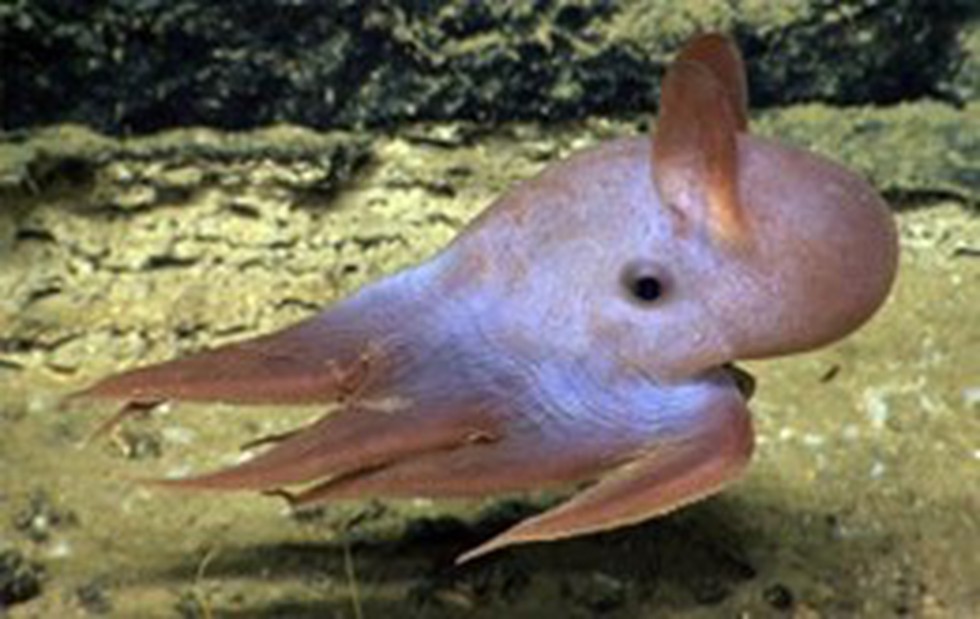
About Dumbo Octopus:
- They are known as the deepest living of all octopus species.
- Genus: Grimpoteuthis spp.
- They get their name from their distinctive flapping fins that bear a striking resemblance to the oversized ears of the iconic Disney elephant character.
- There are about 17 species of Dumbo octopus that belong to a group called “umbrella octopus,” because they are able to float with an umbrella-like look to their mantle.
- Distribution: Worldwide in tropical to temperate latitudes
- Features:
- They live on the seafloor or hover just slightly above it at depths of depths of 3000 to 4000 m (9800 to 13000 ft).
- They are small animals, around 8 inches tall, and have a pair of fins located on their mantle and webbing between their arms.
- The octopuses also have a single line of about 65-68 suckers along each arm.
- Unlike most octopuses, this sea creature doesn’t have ink sacs, which are normally used as a defensive mechanism.
- It uses its ear-like fins to propel through the water and steers using its webbed arms.
- Diet: It consumes snails, worms and other creatures that live near the ocean floor.
Prelims Pointers
Sept. 28, 2023

About Sonobuoys:
- Sonobuoys are small, expendable devices used in underwater acoustics and sonar systems to detect and analyze sound in the ocean, particularly for tracking submarines and other underwater objects.
- Deployment:
- Sonobuoys are deployed by dropping them into the ocean from aircraft or launching them from ships or submarines.
- They sink to a predetermined depth and begin listening for acoustic signals, helping pin-point potential submarine threats.
- Multiple sonobuoys can be deployed in a pattern to determine the exact location of a target.
- There are three types of sonobuoys:
- Passive Sonobuoys quietly listen for and record sounds without emitting any signals. It uses a hydrophone to listen for sound energy from a target.
- Active Sonobuoys emit a sound pulse and analyze the return signals (echoes) to detect and locate targets. It uses a transducer to send an acoustic signal.
- Special Purpose buoys provide information about the environment, such as water temperature, ambient noise level, etc.
- Components: A typical sonobuoy consists of a cylindrical or spherical buoyant housing, sensors for detecting acoustic signals, a battery or power source, and a radio transmitter or other communication system to relay data to the host platform (e.g., aircraft or ship).
- Other Applications: In addition to anti-submarine warfare, they are used for scientific research and environmental studies, including studying the behavior of whales and other marine creatures.
Key Facts about MQ-9B Sea Guardian:
- It is a variant of the MQ-9 "Reaper", an unmanned aerial vehicle (UAV)capable of remotely controlled or autonomous flight operations.
- These are high-altitude long-endurance drones armed with strike missiles which can take out enemy targets with high accuracy.
- It was developed by General Atomics Aeronautical Systems (GA-ASI), primarily for the US Military.
- The Indian Navy has been operating the MQ-9B Sea Guardian since 2020.
- Features:
- It can carry up to 5,670 kg and has a fuel capacity of 2,721 kg.
- The drone can operate at over 40,000 feet.
- The Predator also has a maximum endurance of 40 hours, making it useful for long-hour surveillance.
- It is also capable of automatic take-offs and landings.
- It can safely integrate into civil airspace, enabling joint forces and civil authorities to deliver real-time situational awareness anywhere in the maritime domain -- day or night.
Prelims Pointers
Sept. 28, 2023

About Gems and Jewellery Export Promotion Council (GJEPC):
- It is an apex body of the Gem and Jewellery industry in India, sponsored by the Ministry of Commerce & Industry, Government of India.
- Primary Function:
- It is primarily involved in introducing Indian gem and jewellery products to the international market and promotes their exports.
- To achieve this, the Council provides market information to its members regarding foreign trade inquiries, trade and tariff regulations, rates of import duties, and information about Jewellery fairs and exhibitions.
- Headquarters: Mumbai, Maharashtra
- It has regional offices across the country and with a strength of over 7,500 members.
- Other Functions:
- Organising joint participation in international jewellery shows.
- Inviting countries to explore areas of cooperation in the supply of rough diamonds, coloured gemstones and sourcing of finished jewellery.
- Identifying potential partners and buyers in international markets through buyer-seller meets.
- Executing the Kimberly Process Certification Scheme in the country, as the Nodal Agency appointed by the Government of India.
- Taking up relevant export-related issues with the Government, Ministries, Regulatory Authorities and Agencies.
- Undertaking image-building exercises through international advertisements, publications and audio-visuals
- Running training institutes that impart manufacturing skills, technical and design excellence in six cities – Mumbai, Delhi, Surat, Jaipur, Varanasi and Udupi.
- Setting up Jewellery Parks across the country.
What are Rough Diamonds?
- Rough Diamonds refer to diamonds which are still in their natural state after being removed from the belly of the earth.
- This is the stage before they are actually cut or polished in order to create the marvellousdiamonds found in all of our unique jewellery.
Key Facts about Kimberly Process (KP):
- KP is a multilateral trade regime established in 2003 with the goal of preventing the flow of conflict diamonds.
- The core of this regime is the Kimberley Process Certification Scheme (KPCS), under which States implement safeguards on shipments of rough diamonds and certify them as “conflict-free".
- KP defines conflict diamonds as: ‘rough diamonds used to finance wars against governments’ - around the world.
- The participants include all major rough diamond-producing, exporting and importing countries. The diamond industry, through the World Diamond Council, and civil society groups are also integral parts of the KP.
Prelims Pointers
Sept. 28, 2023
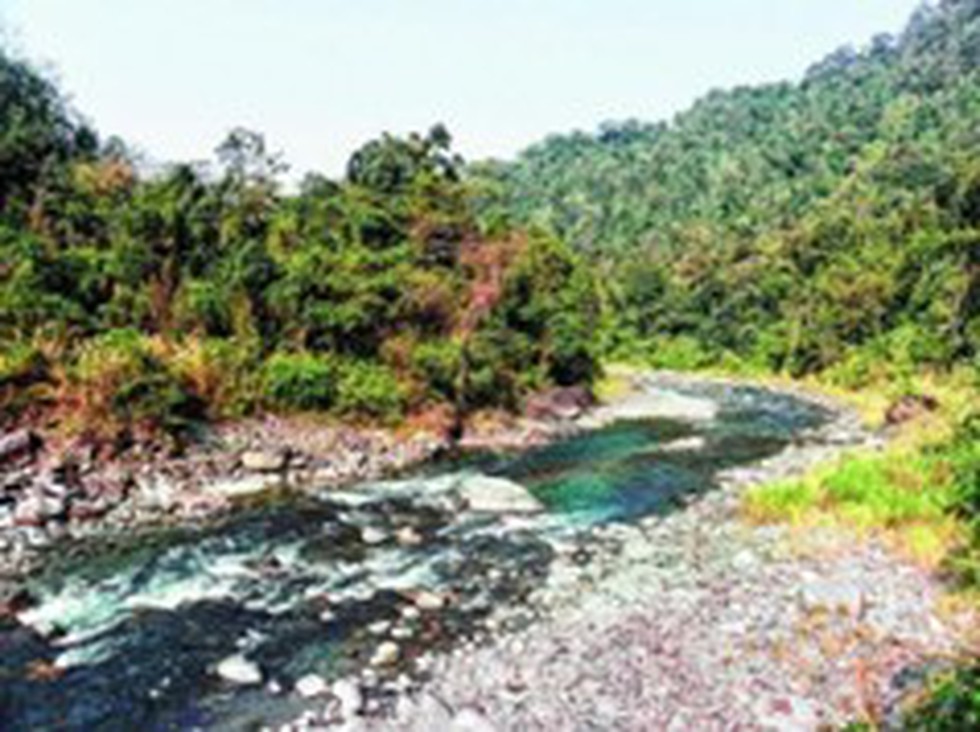
About Kamlang Tiger Reserve:
- Location: It is located in the southeastern part of Lohit District in Arunachal Pradesh near the border with Myanmar.
- It is named after the Kamlang River, which flows through the reserve and joins the Brahmaputra.
- It is spread between the famed Namdapha National Park on its south and Lang River on its north.
- The local inhabitants are Hishmi, Digaru and Mizo.
- Landscape: It encompasses a diverse range of landscapes, including dense tropical forests, grasslands, rivers, and hills.
- Climate: It enjoys a sub-tropical climate as it falls within the sub-tropical zone.
- Vegetation:
- The vegetation may broadly be classified into tropical, temperate and alpine.
- The lower reaches and foothills of the region are covered with tropical wet evergreen forests, while the alpine vegetation dominates the higher altitudes.
- Flora: Common species of trees in the reserve include Ammora wallichi (Amari), Gmelina arborea (Gamari), Terminalia chebula (Hillika), Canarium resigniferum (Dhuna) and many others.
- Fauna:
- All four big cats, including the Snow Leopard, Clouded Leopard, Leopard and Tiger, are the common inhabitants.
- Certain endangered species, such as Himalayan Palm Civets, Leopard Cat, Slow Lories and Hoolock Gibbon, can also be spotted in the sanctuary.
- Other species commonly found here are Giant and Flying Squirrels, Hornbills, Deer, Civets, Boar, Capped Langur, Stump Tailed Macaque etc.
Sept. 27, 2023
Prelims Pointers
Sept. 27, 2023

About Foreign Contribution Regulation Act (FCRA):
- It is a law enacted by Parliament to regulate foreign contributions (especially monetary donations) provided by certain individuals or associations to NGOs and others within India.
- The Act, in its consolidating form, was originally passed in 1976 and majorly modified in 2010.
- The Act aims to prevent foreign organisations from influencing electoral politics, social, political, economic, or religious discussions in India for wrong purposes and activities detrimental to the public interest.
- The Act falls under the purview of the Ministry of Home Affairs (MHA).
- ‘Foreign Contribution’ means the donation, delivery or transfer made by any foreign source of any:
- article (not being an article given to a person as a gift for his/her personal use, the market value of which is not more than one lakh rupees);
- currency (whether Indian or foreign);
- security.
- Contributions made by a citizen of India living in another country (e.g. a Non-Resident Indian (NRI)) from his/her personal savings through the normal banking channels, will not be treated as foreign contributions.
- Who can Receive Foreign Contributions? Any person can receive foreign contribution provided:
- The person has a definite cultural, economic, educational, religious, or social programme;
- The person must have obtained FCRA registration/prior permission from the Central Government and
- Person includes
- an individual;
- a Hindu Undivided Family;
- an association;
- a company registered under Section 8 of the Companies Act, 2013;
- The foreign contribution received has to be utilised only for the purpose for which it has been received, and not more than 20% of the foreign contribution received in a financial year can be utilised to defray administrative expenses.
- The FCRA requires every person or NGO seeking to receive foreign donations to open a bank account for the receipt of foreign funds in the State Bank of India, Delhi.
- Registration under FCRA:
- It is mandatory for all such NGOs to register themselves under the FCRA.
- The applicant should not be fictitious or benami and should not have been prosecuted or convicted for indulging in activities aimed at conversion through inducement or force, either directly or indirectly, from one religious faith to another.
- The registration is initially valid for five years, and it can be renewed subsequently if they comply with all norms.
- Registration can be cancelled if an inquiry finds a false statement in the application. Once the registration of an NGO is cancelled, it is not eligible for re-registration for three years.
- The ministry also has the power to suspend an NGO’s registration for 180 days pending inquiry and can freeze its funds.
- All orders of the government can be challenged in the High Court.
Prelims Pointers
Sept. 27, 2023
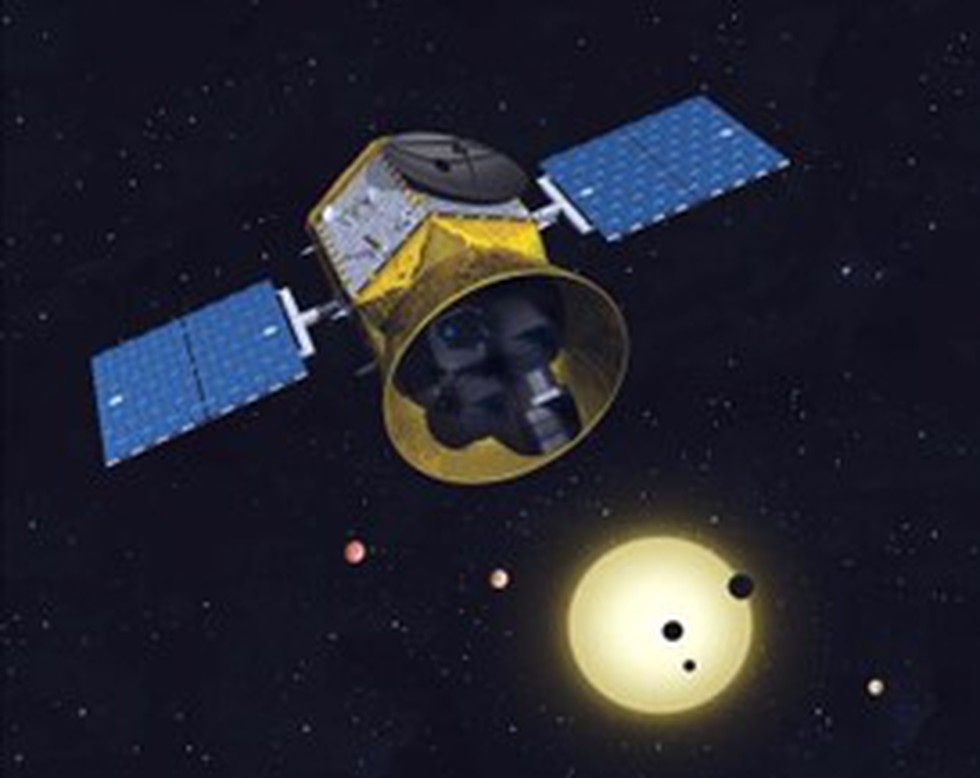
About Transiting Exoplanet Survey Satellite (TESS):
- It is a NASA mission to discover exoplanets around nearby bright stars.
- Launch: It was launched on April 18, 2018, aboard a SpaceX Falcon 9 rocket out of Cape Canaveral.
- Orbit: TESS circles Earth in a unique high Earth orbit of 12 to 15 days, which is inclined in a way that the telescope’s sky view is largely free from obstructions by our bright planet and the Moon.
- The prime mission ended on July 4, 2020, and TESS is now on an extended mission.
- TESS is finding planets ranging from small, rocky worlds to giant planets, showcasing the diversity of planets in the galaxy.
- How does TESS find exoplanets?
- It uses the transit method to detect planets.
- It looks for periodic dips in stars' brightnessas planets cross in front of them along our sightline.
- The larger the planet, the further the drop in brightness during the transit.
- How long it takes a planet to pass in front of the star and come back tells us the shape of its orbit.
- This method reveals the diameter of the planet and the size of its orbit. Orbits within a certain range lie in the “habitable zone”, where liquid water can exist on the surface of an Earth-like world.
Prelims Pointers
Sept. 27, 2023

About Remission of Duties or Taxes on Export Products (RoDTEP) scheme:
- It was introduced by the Government as a duty remission scheme on exports and is being implemented from 1st January 2021.
- It was enforced to repeal and reduce taxes for exported products, thereby encouraging the conditions of exported and increasing the amount of exports in the country.
- The scheme will be administered by the Department of Revenue, Ministry of Finance.
- Tax reimbursement under RODTEP:
- The Scheme provides a mechanism for reimbursement of taxes, duties and levies, which are currently not being refunded under any other mechanism at the central, state and local level but which are incurred by the export entities in the process of manufacture and distribution of exported products.
- This does not only include the direct cost incurred by the exporter but also the prior stage cumulative indirect taxes on goods.
- It is a WTO-compliant scheme and follows the global principle that taxes/duties should not be exported.
- RoDTEP replaced the Merchandise Export Incentive Schemes (MIES), in response to the US challenging the Indian export subsidies under the MEIS at the WTO. When the WTO dispute panel ruled against India, RoDTEP was framed to ensure that India remains WTO-compliant, while also supporting low-volume exports of commodities from India.
- Eligibility:
- It is applicable to all the sectors involved in the export of goods irrespective of their turnover, provided the country of manufacturing of the exported goods should be in India.
- Such an exporter may either be the merchant or manufacturer exporter. However, such goods should have been directly exported by such a person.
- Goods exported through e-commerce platforms are also eligible under this scheme.
- Process of Refund:
- Rebate under the scheme is provided to eligible exporters as a percentage of the freight on board (FOB) value of exports.
- Remission is issued in the form of transferrable e-scrips (type of certificates with some monetary value) maintained in an electronic credit ledger by the CBIC (Central Board of Indirect Taxes and Customs).
- e-scrips can be used for paying basic customs duty on the import of goods or may be transferred electronically to another party.
What is Freight on Board (FOB)?
- Freight on Board (FOB), also referred to as Free on Board, is an international commercial law term published by the International Chamber of Commerce (ICC).
- It indicates the point at which the costs and risks of shipped goods shift from the seller to the buyer.
- The buyer is responsible if the goods are damaged or lost while in transit.
Prelims Pointers
Sept. 27, 2023
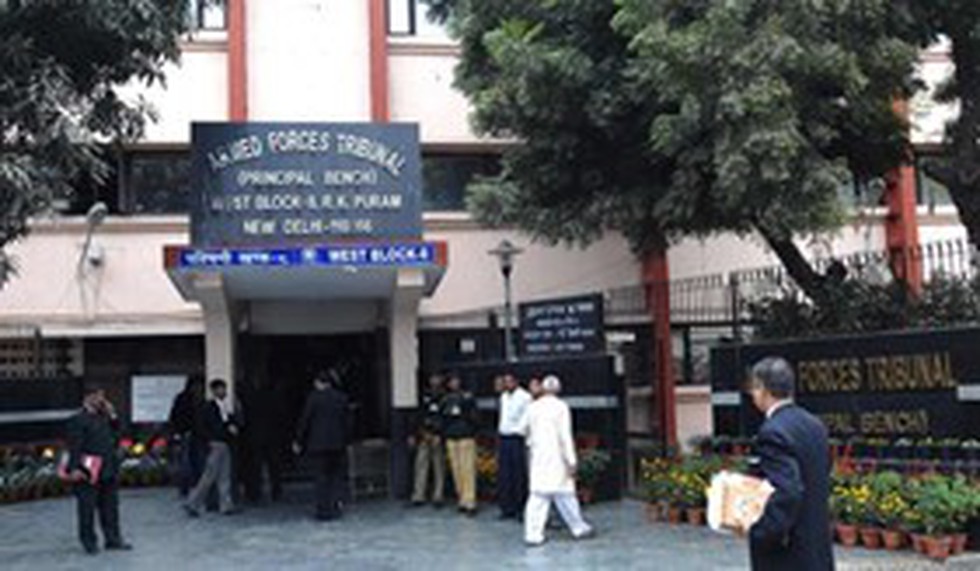
About Armed Forces Tribunal (AFT):
- AFT is a military tribunal in India established in 2009 under the Armed Forces Tribunal Act, 2007.
- Functions:
- To provide for the adjudication or trial of disputes and complaints with respect to commission, appointments, enrolment and conditions of service in respect of persons subject to the Army Act, 1950, the Navy Act, 1957 and the Air Force Act, 1950.
- To provide for appeals arising out of orders, findings or sentences of courts-martial held under the said Acts and for matters connected therewith or incidental thereto.
- The Tribunal can also dismiss the appeal if the court martial findings are found to be justified.
- Any appeal by a person against a decision given by the tribunal can only be taken up in the Supreme Court.
- Benches: It has its Principal Bench at New Delhi and eight Regional Benches at Jaipur, Chandigarh, Lucknow, Guwahati, Kolkata, Chennai, Kochi and Mumbai.
- Composition:
- Each Bench comprises of a Judicial Member and an Administrative Member.
- The Judicial Members are retired High Court Judges, and Administrative Members are retired Members of the Armed Forces who have held the rank of Major General/ equivalent or above for a period of three years or more.
- Judge Advocate General (JAG), who has held the appointment for at least one year, are also entitled to be appointed as the Administrative Member.
- Functioning:
- The Tribunal shall transact their proceedings as per the Armed Forces Tribunal (Procedure) rules, 2008.
- All proceedings in the Tribunal will be in English.
- The Tribunal will normally follow the procedure as is practiced in the High Courts of India.
Prelims Pointers
Sept. 27, 2023
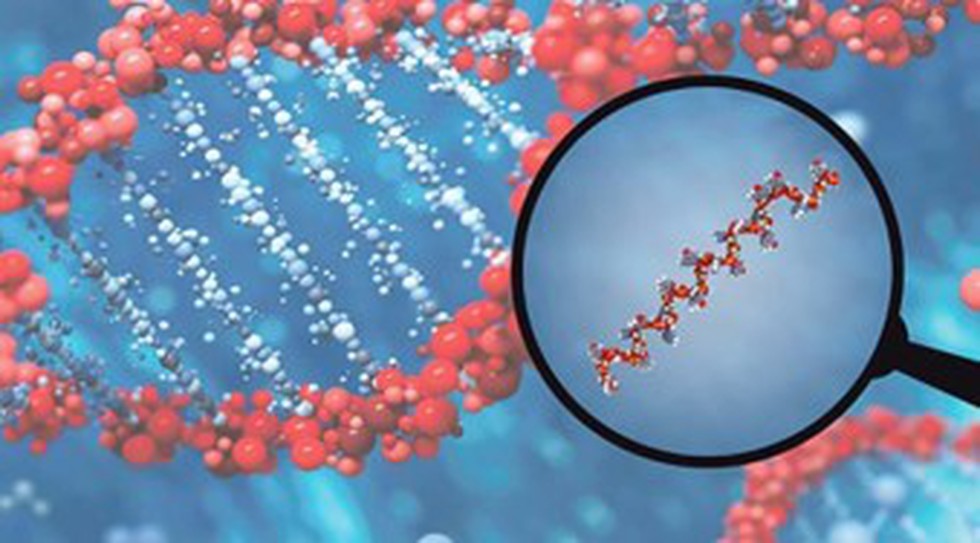
About microRNA (miRNA):
- MicroRNAs (miRNAs) are a class of non-coding RNAs that play important roles in regulating gene expression.
- Gene expression refers to whether a particular gene is making too much, too little or the normal amount of its protein at a particular time.
- Molecules of miRNA are found in cells and in the bloodstream.
- They are typically composed of approximately 21 to 24 nucleotides, making them much smaller than messenger RNAs (mRNAs), which carry instructions for protein synthesis. Their small size allows them to bind to specific target mRNAs.
- How does miRNA control gene expression?
- miRNA controls gene expression mainly by binding with messenger RNA (mRNA) in the cell cytoplasm.
- Instead of being translated quickly into a protein, the marked mRNA will be either destroyed and its components recycled, or it will be preserved and translated later.
- So, if the level of a particular microRNA is underexpressed (its level in the cell is abnormally low), the protein it normally regulates may be overexpressed (its level will be unusually high in the cell); if the microRNA is overexpressed (its level is unusually high), its protein will be underexpressed (its level will be unusually low).
- Biological Functions:
- They play critical roles in various biological processes, including development, cell differentiation, proliferation, and apoptosis (programmed cell death).
- They are involved in maintaining cellular homeostasis and responding to environmental cues.
- Disease Implications:
- Alteration in miRNA expression results in changes in the profile of genes involving a range of biological processes, contributing to numerous human disorders.
- With high stability in human fluids, miRNAs in the circulation are considered as promising biomarkers for diagnosis, as well as prognosis of disease.
What is RNA?
- RNA, or Ribonucleic Acid, is a molecule that plays a central role in various biological processes, particularly in the transfer of genetic information and the synthesis of proteins.
- It is a macromolecule similar to DNA (Deoxyribonucleic Acid) in many ways but differs in its structure and functions.
- RNA is composed of nucleotide units, just like DNA. Unlike DNA, however, RNA is most often single-stranded.
- Function:
- The primary function of RNA is to convey genetic information from DNA and use that information to guide the synthesis of proteins.
- This process involves transcription, where a complementary RNA strand is synthesized based on a DNA template, and translation, where the information encoded in the RNA is used to assemble a specific sequence of amino acids into a protein.
Key Facts about mRNA:
- Messenger RNA (mRNA) is a type of single-stranded RNA involved in protein synthesis.
- mRNA is made from a DNA template during the process of transcription.
- The role of mRNA is to carry protein information from the DNA in a cell’s nucleus to the cell’s cytoplasm(watery interior), where the protein-making machinery reads the mRNA sequence and translates each three-base codon into its corresponding amino acid in a growing protein chain.
- So mRNA really is a form of nucleic acid which helps the human genome, which is coded in DNA, to be read by the cellular machinery.
Prelims Pointers
Sept. 27, 2023
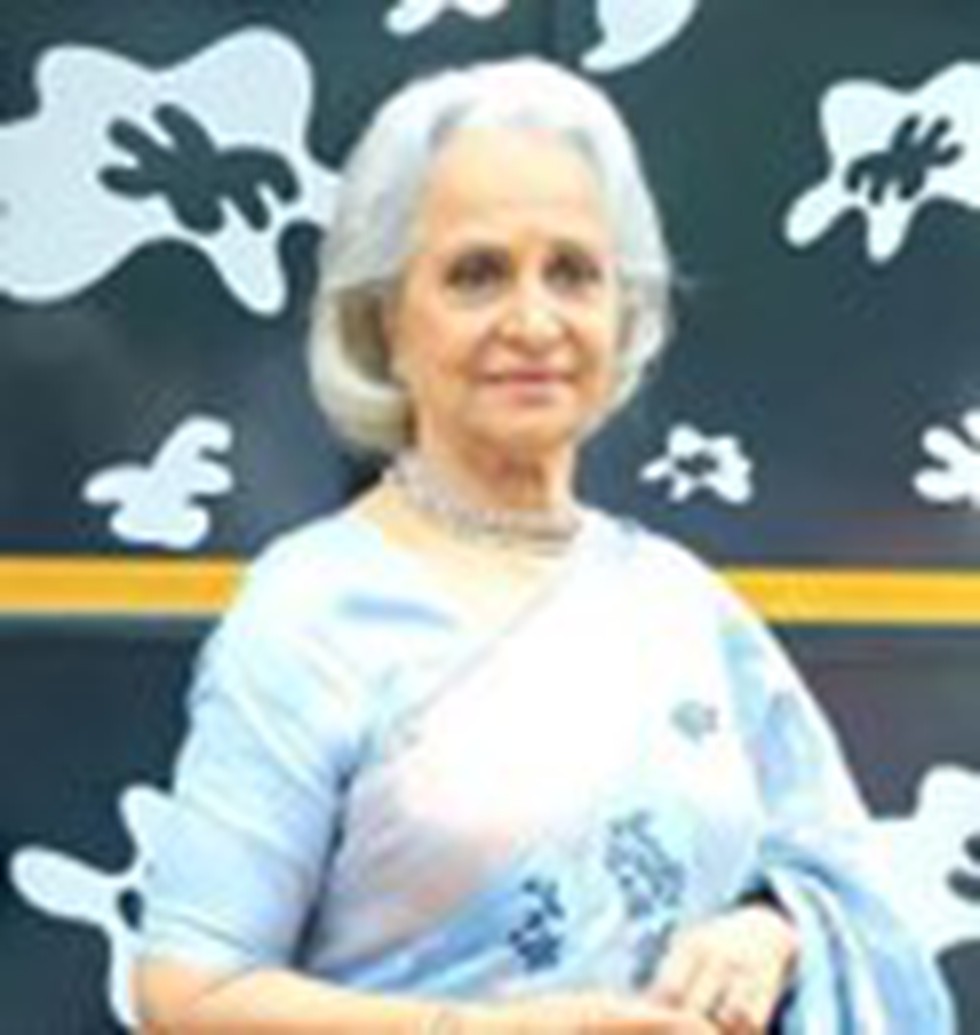
About Dadasaheb Phalke Award:
- It is India's highest award in the field of cinema.
- It is presented annually at the National Film Awards ceremony by the Directorate of Film Festivals, an organisation set up by the Ministry of Information and Broadcasting.
- The recipients are recognized for their ‘outstanding contribution to the growth and development of Indian cinema’.
- The award comprises a Swarna Kamal (Golden Lotus) medallion, a shawl, and a cash prize of 10 lakh rupees.
- The award was introduced by the Government of India to commemorate Dadasaheb Phalke's contribution to Indian cinema, who is popularly known as and often regarded as "the father of Indian cinema".
- It was first presented in 1969. The first recipient of the award was actress Devika Rani, “the first lady of Indian cinema.”
Prelims Pointers
Sept. 27, 2023
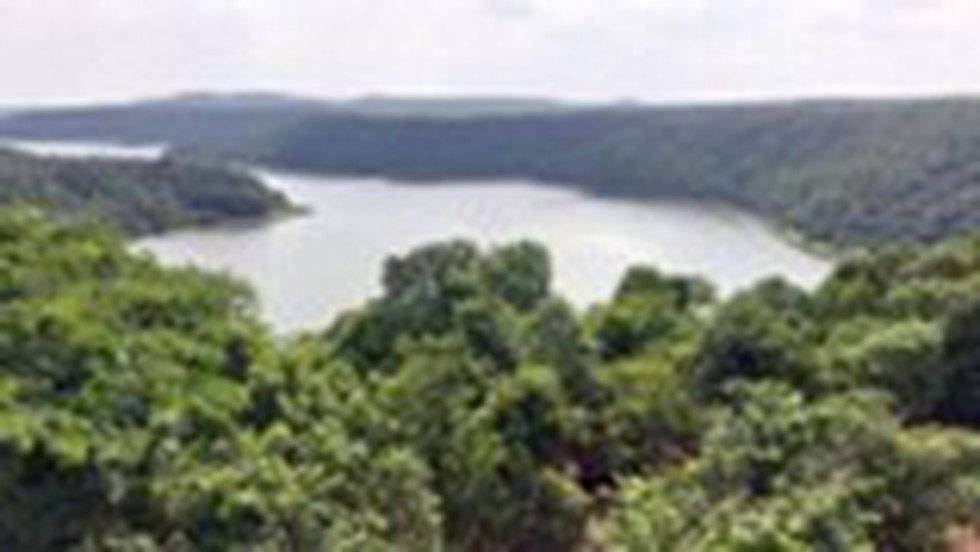
About Chincholi Wildlife Sanctuary:
- It is located around the Chandrampalli Dam in the Kalaburagi district of Karnataka.
- It was declared a sanctuary in 2011.
- It is the first dry land Wildlife Sanctuary in South India.
- This is the only area in the Hyderabad Karnataka Region with rich floristic diversity
- Vegetation: The Sanctuary has good dry deciduous and Moist deciduous forest in the core with Acacia and Teak plantations on the fringes.
- Flora: Apart from medicinal herbs and trees, species like Red Sanders and Sandalwood are found abundantly.
- Fauna: It is home Black Buck, Common Fox, Four-horned Antelope, Fruit bat, Hyena, Indian Wolf etc. Over 35 species of birds, including Black Drongo, Black-winged Kite, Blossom – headed Parakeet, Blue pigeon, Black-headed Oriole and Grey partridge are also found in this Sanctuary.
- Local Tribes: Chincholi is also home to Lambani Tandas, a protected tribal community that lives in the forests in harmony with nature.
Prelims Pointers
Sept. 27, 2023
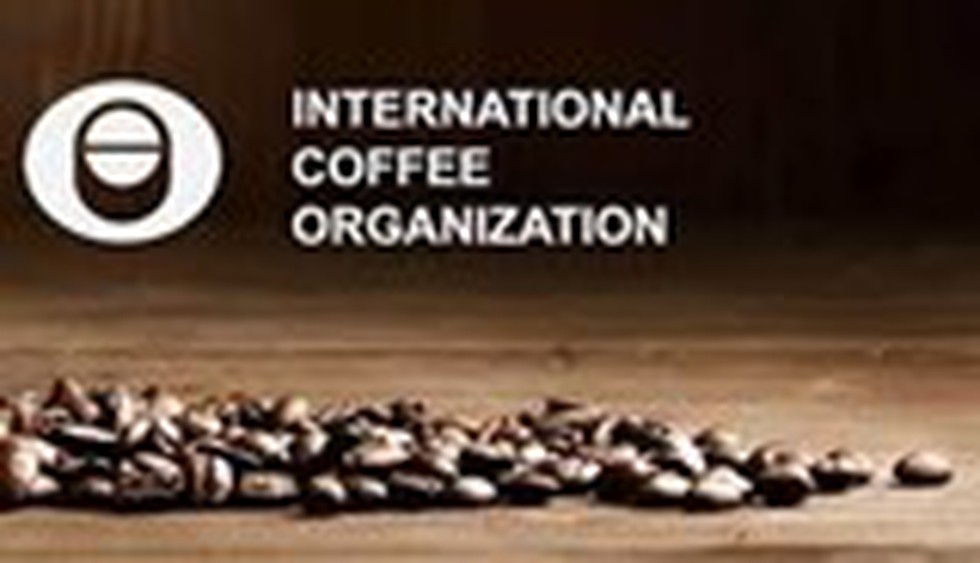
About International Coffee Organization:
- It was established in 1963 under the aegis of the United Nations and following the approval of the first International Coffee Agreement in 1962.
- The ICO is the only intergovernmental organization for coffee, bringing together exporting and importing Governments.
- It currently represents 93% of world coffee production and 63% of world consumption.
- The mission of the Organization is to strengthen the global coffee sector and promote its sustainable expansion in a market-based environment for the benefit of all actors in the Global Coffee Value Chain (G-CVC).
- Member countries: 49 (42 coffee exporting and 7 importing countries) 49 Members
- India is a member of this organisation.
Key facts about Coffee cultivation
- The vast majority of the world’s coffee comprises two species — Coffea Arabica (Arabica) and Coffea Canephora (Robusta).
- Climatic conditions required for coffee production
- Climate: Hot and humid climate for its growth.
- Temperature: Ranging between 15°C and 28 °C.
- Rainfall:150 to 250 cm.
- Soil: Well-drained, loamy soil containing a good deal of humus and minerals like iron and calcium are ideal for coffee cultivation.
- It is generally grown under shady trees.
- Dry weather is necessary at the time of ripening of the berries.
- It is grown on hill slopes at elevations from 600 to 1,600 metres above sea level.
- Coffee growing states in India: Karnataka, Kerala, Tamil Nadu, Andhra Pradesh and Odisha, among which, Karnataka produces the most with over 70% of the total output.
Prelims Pointers
Sept. 27, 2023
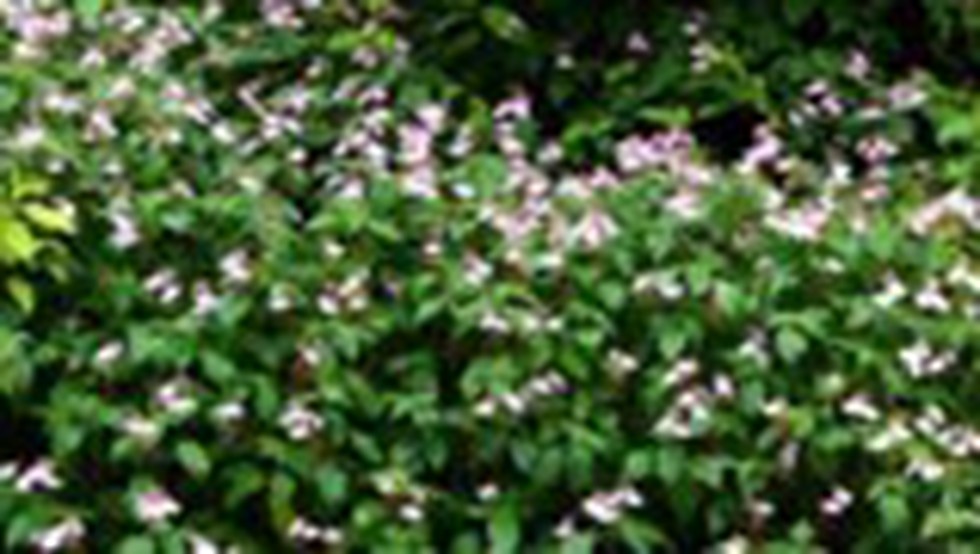
About Balsam:
- It is locally called as Kasithumba and Onappovu.
- It is known as ‘touch-me-not’ because of the bursting of mature seeds and seed distribution.
- They are commonly known by different names including balsams, touch me not, jewel weed etc.
- Distribution
- It is distributed in the tropical, sub-tropical and northern temperate regions of the world.
- It is found mainly in India, China and Africa and some parts of Europe and North America.
- India is home to 220 balsam species in which 135 are found in the southern Western Ghats.
- Anamudi, the highest mountain in the Western Ghats, and the surrounding high ranges are known for the diversity of wild balsams.
- The normal lifecycle of balsams is from June to December.
- The plant mainly grows inside pockets of forest areas.
- This fleshy orophytic herb usually prefers humid habitats and completes the lifecycle in the rainy season
- It is a major indicator species of climate change.
Prelims Pointers
Sept. 27, 2023

About PRIP scheme:
- The objective of the scheme is to transform Indian pharmaceuticals sector from cost based to innovation-based growth by strengthening the research infrastructure in the country.
- Aim: To promote industry-academia linkage for R&D in priority areas and to inculcate the culture of quality research and nurture our pool of scientists.
- This will lead to sustained global competitive advantage and contribute to quality employment generation in the country.
- Time period: Five years (2023-24 to 2027-28).
- The scheme has two components-
- Component A:Strengthening the research infrastructure by establishment of 7 Centre of Excellence (CoEs) at National Institutes of Pharmaceutical Education and Research (NIPERs). -These CoEs would be set up in pre identified areas with a financial outlay of Rs 700 Crores.
- Component B: Promoting research in pharmaceutical sector by encouraging research in six priority areas like New Chemical Entities, Complex generics including biosimilars, medical devices, stem cell therapy, orphan drugs, Anti-microbial resistance etc.,
- Financial assistance will be provided for the Industries, MSME, SME, Startups working with government institutes and for both in- house and academic research.
- The component has a financial outlay of Rs.4250 Crores.

